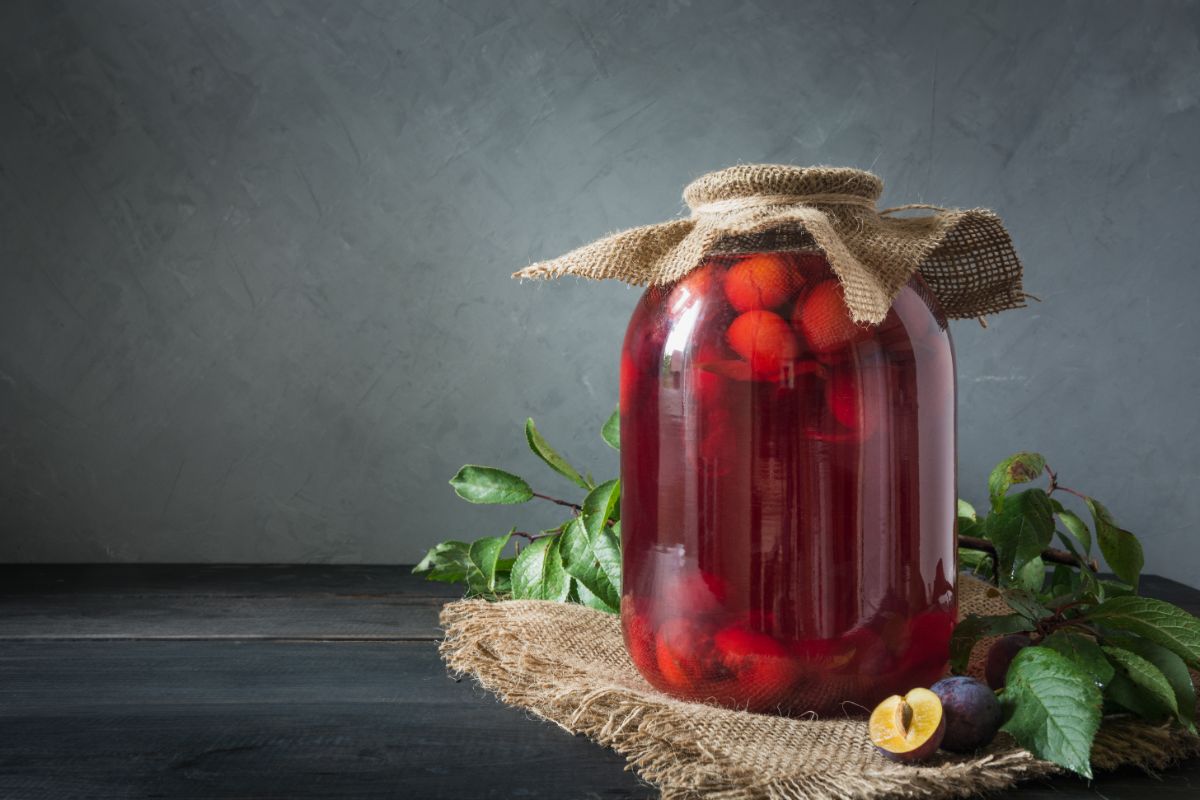For canning fresh plums, wash and dry the fruit, removing any stems. Pack halved and pitted plums tightly into canning jars, leaving ½ inch of headspace, and cover with light syrup. Process in a boiling water bath canner for 20 minutes, adjusting per elevation.
What is the Best Way to Can Plums?
The best way to can plums is water bath canning. Plums have a pH range of approximately 2.8 to 4.6, which makes them high-acid fruits. Water bath canning is safe and effective for preserving high-acid foods.
Print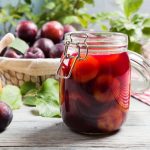
Homemade Canning Plums Recipe
- Total Time: 2 hours
- Yield: 9 pints 1x
Description
This recipe for water bath canning plums captures the natural sweetness and tang of plums while maintaining their texture. The balance of flavors and precise processing time ensure a delightful treat you can enjoy throughout the year.
Ingredients
- 9 lbs of freestone plums
- 10 cups water
- 1 cup of sugar
- Optional: cinnamon sticks, star anise, bourbon, fruit juice
Instructions
- Fill your water bath canner with at least two inches of water and set it on the stove over low heat.
- Sterilize either pint jars or quart jars by boiling them in soapy water or using the sterilize cycle on your dishwasher.
- Give your canning lids and bands a thorough cleaning with warm soapy water and rinse well.
- Warm up the canning jars by placing them in warm water inside the canner.
- Combine the water and sugar in a large pot. Bring the mixture to a rolling boil over medium-high heat.
- Wash the plums and remove the pits if desired.
- If you are canning whole plums, prick the skins with a toothpick to prevent the skin from popping. The plums will have room to expand and keep their shape inside the jars. Alternatively, cut plums in half for canning plum halves.
- Hot pack method: place the prepared plums into the stockpot of boiling syrup and boil for 2 minutes. Turn off the heat and let them sit for 20 to 30 minutes. Some people like to add cinnamon, star anise, or a dash of bourbon for flavor.
- Pack the hot plums into the hot jars using a ladle. Leave a 2-inch headspace after adding the solid plums. Fill the jars with hot syrup, water, or juice and leave a ½ inch headspace.
- Raw pack method: fill the jars with raw plums and add hot water, juice, or syrup, leaving a ½-inch headspace.
- Remove air bubbles by running a soft kitchen instrument around the inside of the jars.
- Wipe the rims of the jars clean with a damp kitchen towel or paper towel and securely place new canning lids on the tops of each jar. Apply the screw bands and tighten until fingertip tightness.
- Use canning tongs to transfer the jars into the canner, placing them on the canning rack. Bring the water to a rolling boil and process according to jar size and packing method:
Water Bath Canning Processing Times
- 0 – 1,000ft: hot packs 20 mins; raw packs 25 mins (pints and quarts)
- 1001 – 3,000ft: hot packs 25 mins; raw packs 30 mins (pints and quarts)
- 3,001 – 6,000ft: hot packs 30 mins; raw packs 35 mins (pints and quarts)
- 6,001ft and up: hot packs 35 mins; raw packs 40 mins (pints and quarts)
Post Processing
- Turn off the heat after the processing time and remove the canner’s lid. Leave the jars in the hot water inside the canner for 5 minutes.
- Carefully lift the jars onto a work surface protected by a clean towel using tongs or a jar lifter. Leave them to cool undisturbed for 12 to 24 hours.
- Test the seals by gently pressing the center of the lids with your thumbs to check for proper sealing. Remove the screw bands and wipe the jars clean. Label all sealed jars and store them in a cool, dark place. For unsealed jars, reprocess immediately with new lids or refrigerate and use the contents within 3-5 days.
- Prep Time: 1 hour
- Canning Time: 40 minutes
- Cook Time: 10 minutes
Nutrition
- Serving Size: 100g
- Calories: 63kcal
- Sugar: 15g
- Sodium: 20mg
- Fat: 0g
- Saturated Fat: 0g
- Carbohydrates: 16g
- Fiber: 1g
- Protein: 0g
- Cholesterol: 0mg
What is the Difference Between Canning Plums and Preserving Plums?
Canning typically refers to preserving food in sealed jars or cans, using heat to kill bacteria and create a vacuum seal. When canning plums or other stone fruits, the fruit is generally packed in jars, covered with a liquid (such as syrup or juice), and processed in a boiling water bath to ensure safety and prolong shelf life.
Preserving plums is a broader term encompassing various methods of extending the shelf life of the fruit. This can include canning, but it also includes other techniques like freezing, drying, making jams or jellies, or even fermenting.
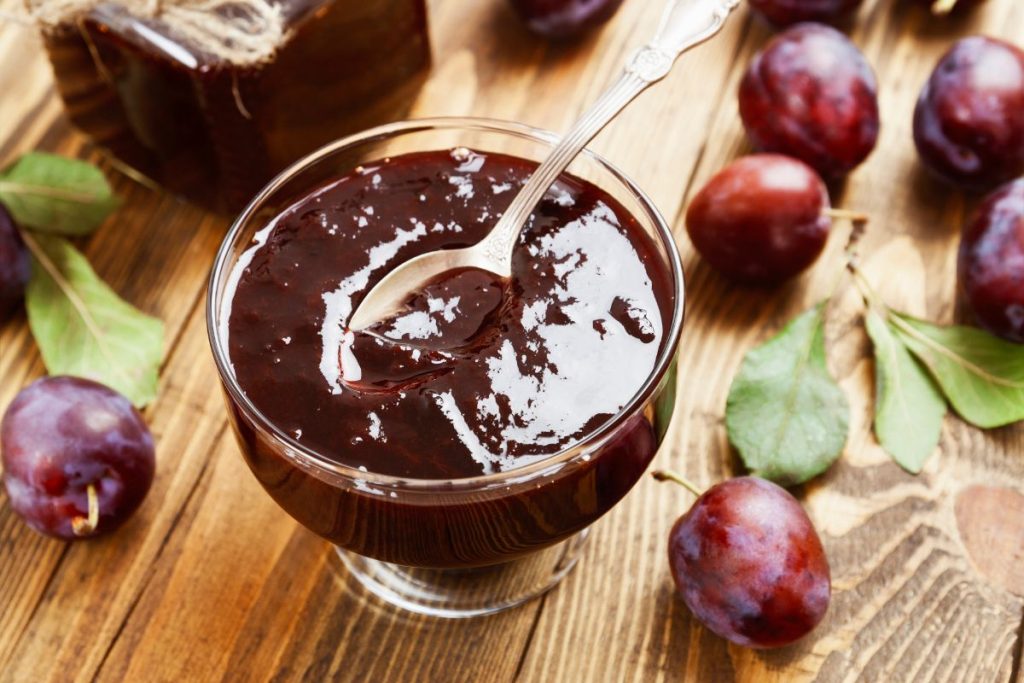
Should You Peel Plums Before Canning Them?
Whether or not to peel plums before canning them is a matter of personal preference.
- The peel adds texture to the preserved fruit. You can leave it on if you enjoy the slightly chewy texture and don’t mind the peel.
- Removing the peel can result in a smoother appearance of the canned plums.
- Peeling plums can be time-consuming, especially if you have a large quantity to process.
- The peel of plums can add a slightly bitter or tart note to the fruit. Peel the plums before canning if you prefer a sweeter flavor profile.
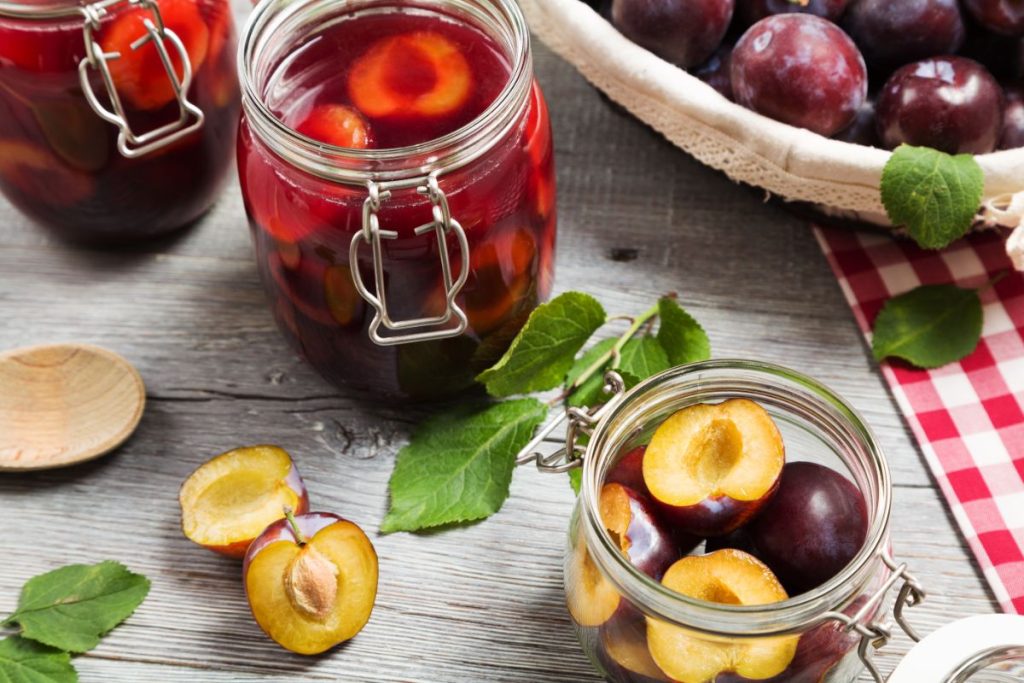
Does Canning Plums Change Their Taste?
Canning plums can alter their taste and texture:
- Canning plums can intensify their natural sweetness as the heat from the canning process helps break down the fruit’s sugars. Additionally, if a light syrup or juice is added to the canning liquid, it can enhance the overall sweetness and flavor of the plums.
- Canned plums typically have a softer texture compared to fresh plums. The heat during canning can cause the fruit to soften, making them easier to eat and incorporate into various recipes.
Is it Safe to Can Plums?
Yes, it is safe to can plums when proper canning techniques are followed. It is important to follow tested recipes and not alter them to ensure product safety.
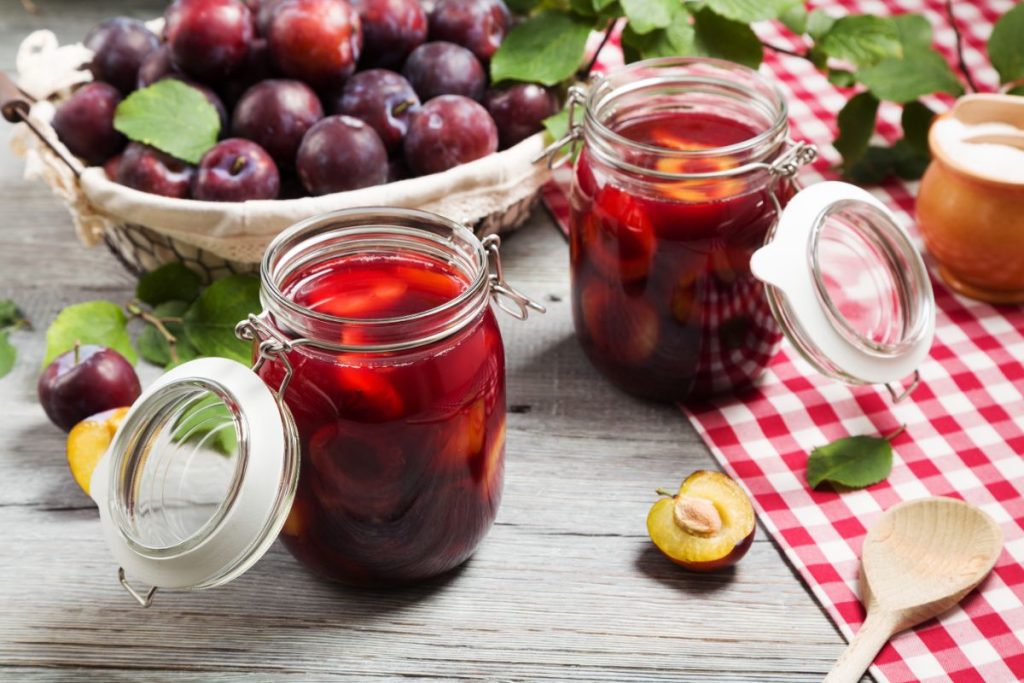
How to Store Canned Plums
After canning, store the sealed jars in a cool, dark place. A temperature of around 50 to 70°F is ideal for maintaining the quality and safety of the canned plums. Ensure jars are labeled and stored at least six inches off the ground to prevent corrosion of metal lids.
How Long Do Canned Plums Last?
Canned plums have a relatively long shelf life of 1 to 2 years. However, the exact shelf life depends on the quality of the canning process, storage conditions, and the specific recipe used.
You should consume canned plums within one year from the date of canning. This time frame allows for optimal taste and texture.

